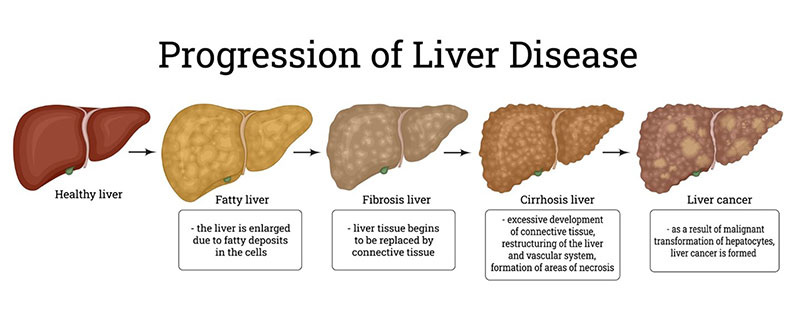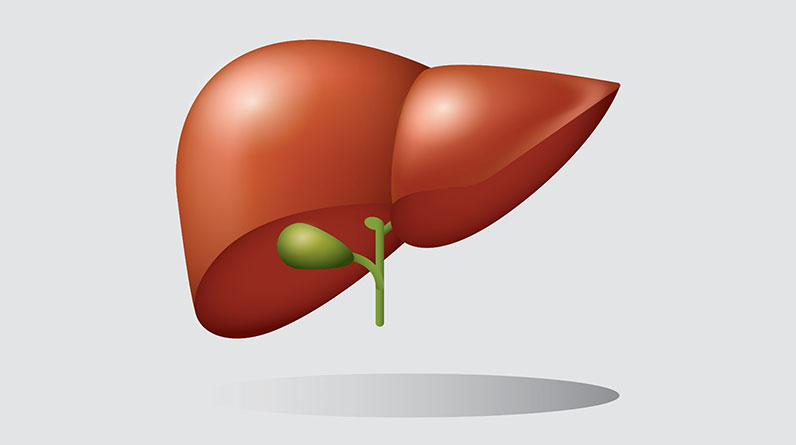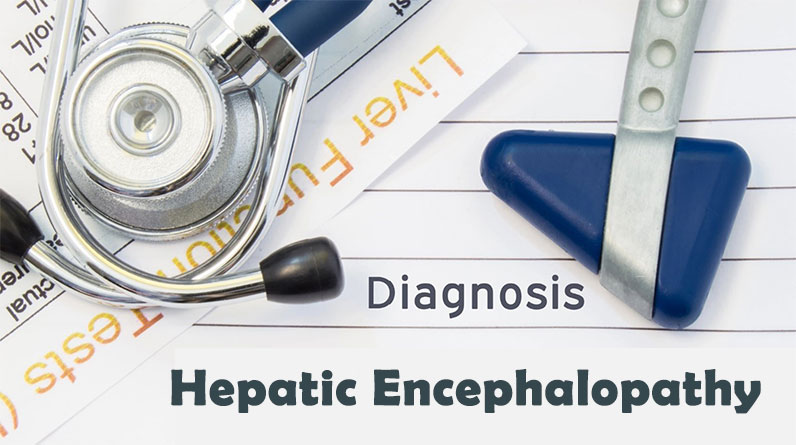
Cirrhosis
Cirrhosis is a chronic liver condition characterized by the replacement of healthy liver tissue with scar tissue, leading to impaired liver function. This progressive disease disrupts the liver’s ability to perform essential functions such as detoxification, protein synthesis, and nutrient metabolism.
Cirrhosis is a significant global health concern, affecting millions of people worldwide. It is often the result of long-term liver damage from conditions such as chronic hepatitis (B and C), prolonged alcohol abuse, and non-alcoholic fatty liver disease (NAFLD). Other causes include autoimmune hepatitis, genetic disorders like hemochromatosis and Wilson’s disease, and chronic exposure to toxins or medications.
The prevalence of cirrhosis varies across different regions and is influenced by lifestyle factors, healthcare access, and the prevalence of underlying conditions. In developed countries, alcohol-related liver disease and NAFLD are the leading causes, while viral hepatitis remains a predominant cause in many developing regions.
In what follows, we’ll discuss this chronic liver condition and learn more about its causes, symptoms, and treatment possibilities.
Symptoms and Complications
Cirrhosis is a progressive disease, and its symptoms can range from mild in the early stages to severe as the condition advances. Understanding these symptoms and the potential complications is crucial for early diagnosis and effective management.
In the initial stages, cirrhosis may be asymptomatic or present with nonspecific symptoms, making early detection challenging.
Some early signs include:
- Fatigue and Weakness: A general feeling of tiredness and a lack of energy.
- Loss of Appetite: Reduced desire to eat, which can lead to weight loss.
- Nausea: Feeling nauseous or experiencing an upset stomach.
- Abdominal Pain and Discomfort: Mild pain or discomfort in the upper right quadrant of the abdomen.
- Spider Angiomas: Small, spider-like blood vessels visible on the skin, often on the face and chest.
As cirrhosis progresses, more pronounced symptoms and signs of liver dysfunction become evident, including:
- Jaundice: Yellowing of the skin and eyes due to the buildup of bilirubin.
- Edema and Ascites: Swelling in the legs, ankles, and abdomen caused by fluid retention.
- Bruising and Bleeding: Increased tendency to bruise or bleed easily due to impaired production of clotting factors.
- Itchy Skin: Persistent itching, often due to bile products deposited in the skin.
- Dark Urine and Pale Stools: Changes in urine and stool color reflecting altered bile processing.
- Muscle Wasting: Loss of muscle mass due to the body’s inability to properly process nutrients.
Cirrhosis can lead to several serious complications as liver function continues to decline:
Portal Hypertension is scar tissue in the liver which obstructs blood flow, causing increased pressure in the portal vein, which is the central vein associated with the liver.
This condition can lead to:
- Varices: Enlarged veins, particularly in the esophagus and stomach, which can rupture and cause life-threatening bleeding.
- Splenomegaly: Enlargement of the spleen, which can be associated with a decrease in red blood cells, white blood cells, and platelets.
Hepatic Encephalopathy: The liver’s diminished ability to detoxify substances leads to the accumulation of toxins in the bloodstream, particularly ammonia.
This can cause:
- Cognitive Impairment: Ranging from mild confusion and memory problems to severe disorientation and coma.
- Asterixis: A flapping tremor of the hands when the wrists are extended.
- Liver Cancer: Cirrhosis significantly increases the risk of developing hepatocellular carcinoma (HCC), a primary form of liver cancer. Regular monitoring through imaging and blood tests is essential for early detection and treatment.
- Infections: People with cirrhosis are more susceptible to infections due to a weakened immune system.
Common infections include:
- Spontaneous Bacterial Peritonitis (SBP): A severe bacterial infection of the abdominal fluid, which can be life-threatening if not promptly treated.
- Urinary Tract Infections (UTIs): Infections of the urinary system, often more frequent and severe in those with liver disease.
- Respiratory Infections: Increased risk of pneumonia and other lung infections.
Treatment and Management
Managing cirrhosis involves a multifaceted approach to slow disease progression, improve symptoms, and prevent complications. While cirrhosis cannot be reversed, appropriate treatment and lifestyle changes can significantly improve the quality of life and outcomes for patients.
Medication
Medications are utilized in managing cirrhosis and its complications. The specific drugs prescribed depend on the underlying cause and the severity of the condition. For instance, antiviral medications are utilized for treating hepatitis B and C infections, thereby reducing liver damage.
Diuretics are commonly used to manage fluid retention and reduce swelling associated with cirrhosis. Non-selective beta-blockers like propranolol can help improve portal hypertension and reduce the risk of variceal bleeding.
In some cases, vitamin and mineral supplements may be necessary to address deficiencies resulting from impaired liver function.
Lifestyle Changes
Lifestyle modifications are crucial in managing cirrhosis and preventing further liver damage. One of the most important changes for patients with alcohol-related cirrhosis is complete abstinence from alcohol, as continued drinking accelerates liver damage and can be fatal.
For those with non-alcoholic fatty liver disease (NAFLD), adopting a healthy diet and engaging in regular physical activity can help manage obesity and metabolic syndrome, which are key contributors to liver damage.
A balanced diet rich in fruits, vegetables, lean proteins, and whole grains, while limiting sodium intake, can help reduce fluid retention and improve overall health. Avoiding hepatotoxic drugs and substances, including certain over-the-counter medications and herbal supplements, is also essential to prevent additional liver stress.
Liver Transplant
In advanced cases of cirrhosis where liver function is severely compromised and other treatments are no longer effective, a liver transplant may be necessary. This procedure involves replacing the diseased liver with a healthy liver from a deceased or living donor.
Liver transplantation is a complex and resource-intensive process that requires careful patient selection, as candidates must meet specific criteria and be healthy enough to undergo the surgery.
Post-transplant, patients must take immunosuppressive medications to prevent organ rejection and require lifelong medical follow-up. While a liver transplant can significantly extend life expectancy and improve quality of life, the availability of donor organs and the risks associated with the surgery and post-operative care are significant considerations.
The treatment and management of cirrhosis require a comprehensive approach that includes medication, lifestyle changes, and, in severe cases, liver transplantation. By addressing the underlying causes, managing symptoms, and preventing complications, these strategies can manage the progression of the condition and enhance the quality of life for individuals.
Early intervention and ongoing medical care are the best methods for optimizing outcomes and supporting patients through the challenges of this chronic liver condition.




